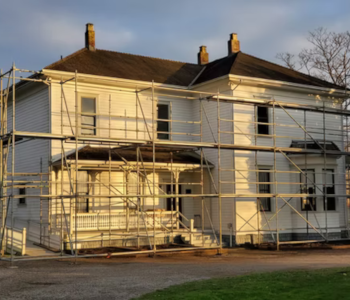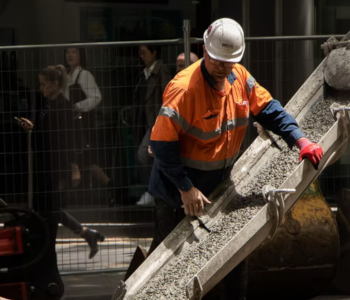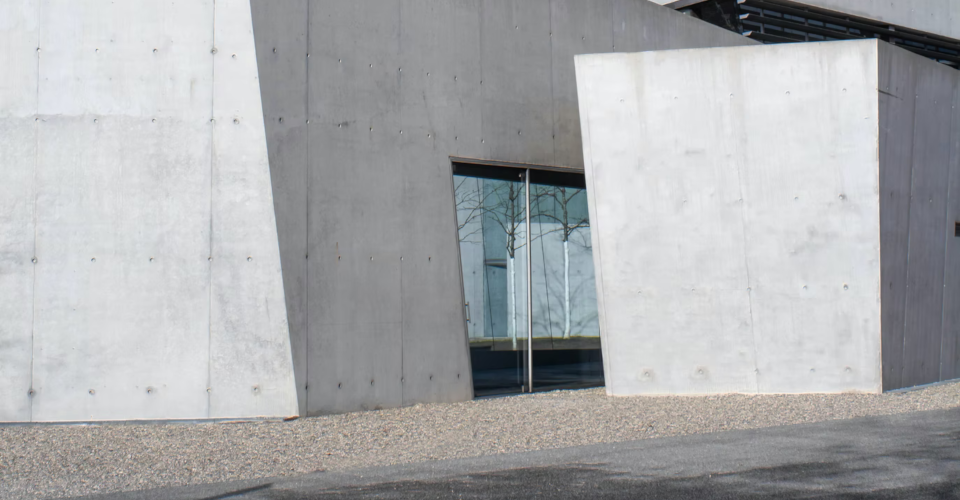Concrete 3D Printer: Build Houses the New Way
What is Concrete 3D Printing?
The art of construction has remained unchanged since time memoria. Today, the construction industry is known for its ability to adapt to the building sector’s rapid innovations. With technological advancement, mechanical and digital processes slowly replace manual labor and traditional building methods.
Concrete 3D printing is one of the most promising technologies that is starting to take over the field of construction.
But what exactly is concrete 3D printing? Like other 3D printing technologies, concrete 3D printing is an additive manufacturing (AM) technique that uses a unique mix of concrete to create an object through layering. The components for concrete 3D printing are similar to other concrete mixtures: water, cement, and sand or stone.
However, the texture and consistency of the mix should be identical to an aerated dough to prevent blockage on the nozzle of the printing equipment.
Albeit still in its infancy stage, people worldwide have adopted the technology since it enables manufacturing companies to use pre-designed concrete components for building projects. It helps them save time and resources in the process.
In addition, concrete 3D printing is projected to bring housing solutions to approximately one billion global citizens that lack access to safe and affordable accommodation. Thus, it is no surprise that critics have speculated this technology is the go-to material for building and construction.
How Does Concrete 3D Printing Work

3D printers function similarly to ordinary inkjet printers. However, instead of depositing ink on paper to create a two-dimensional object, 3D printers would deposit layers of raw material – such as specially formulated concrete mixture – before fusing them to create a three-dimensional object.
To make a 3D structure using concrete 3D printing, first, you should create a digital model through 3D modeling software. Then, you slice the file and translate it into a g-code, a machine language that directs the print head of the printer where to deposit the material until the final piece is produced.
Types of Concrete 3D Printers
Gantry Concrete 3D Printer
This type of concrete printer has a construction frame, three gantries, and a printhead. It is a popular machine for commercial construction because of its size and ability to print buildings either in parts or in whole.
The Gantry moves around a defined space and operates on a cartesian coordinate system composed of 3 axes: X, Y, and Z. The X-axis is the length of the rails used for the printer to move back and forth. The Y-axis is the distance between the rails on opposite sides. On the other hand, the z-axis is the height of the pillars carrying the nozzle.
Measuring about 2.5 meters tall and 8.5 meters wide, ICON’s Vulcan II is a large-scale concrete printer able to build a house worth 4,000 dollars within 24 hours successfully.
Although highly efficient in building finished structures, the machine costs just under 250,000 dollars; thus, many construction companies still hire a printer instead of investing in one.
| Advantages of Using a Gantry Concrete 3D Printer |
|---|
| • Can be used for houses and commercial buildings |
| • Capable of printing larger structures than robotic arm printers |
| • Builds more cost-efficient and stable structures |
| • Easier to control than other types of concrete 3D printing |
Robotic Arm Concrete 3D Printer
This 3D printer also has a moveable printer head located at the end of the robotic arm. However, instead of moving in a defined space, it has 6 axes that move between X, Y, and Z planes but are more flexible and reachable. This feature enables the machine to create more complex geometries and higher resolution parts than the Gantry type.
The robotic arm printer can initially only build smaller parts, but recent models can compete with the Gantry. It is also more compact and portable, which makes it easier to set up and takedown.
In 2018, a Russian startup named Apis Cor made headlines after building a 400 sqft home using a robotic arm concrete 3D printer. Two years later, the company took center stage in the construction industry after successfully building the largest 3D printed structure.
| Advantages of Using a Robotic Arm Concrete 3D Printer |
|---|
| • Easier to set up and take down |
| • Can print more complex designs than gantry concrete printers |
| • Can be used on smaller projects |
| • Better control and capable of printing fine details |
Modular Concrete 3D Printer (COBOD)
COBOD is a European construction company that strives to fully automate the construction industry by designing 3D printers and automated processes for building sites. BOD2 is a second-generation concrete 3D printer made from quality materials that are carefully engineered to meet the industry’s high requirements.
BOD2 is a gantry-type printer. However, unlike the regular ones, this model is a modular construction printer developed to be configurable for every project. It has an interchangeable nozzle system that can accommodate different specifications. In terms of mounting, COBOD’s BOD2 is more flexible. Therefore, you can mount it to the foundation or movable concrete pillars.
Furthermore, the nozzles of BOD2 are re-engineered to have a new dimension of control of the structure’s surface quality and texture. This particular feature reduces the amount of cladding and post-treatment process since the nozzle’s print head can smoothen and texturize the wall during the printing process.
| Advantages of Using a Modular Concrete 3D Printer |
|---|
| • Can easily be configured for different types of building projects |
| • Better control and allows for smoother buildings during printing |
| • Materials can easily be switched depending on the need |
| • More flexible than gantry concrete 3D printers |
Benefits of Using 3D Printing Construction
Low labor efficiency, high accident rate, and poor quality output due to insufficiently skilled workforce are common problems in the construction industry. The application of automated machines and 3D printing technology can overcome these bottlenecks since they can ease, if not eliminate, the challenges in the construction technology and management industry. Here are some reasons why 3D printing has become beneficial in the world of construction.
Speed

In the construction field, a particular project, depending on its intricacy, would take weeks or even months to be fully completed. 3D printing technology has already shown its ability to build objects in a short period, even in the building sector. Marco Vonk of Saint-Gobain Weber Beamix – a 3D concrete printing company in Europe – says that one can save about 60% and 80% of the time on the job site and labor, respectively.
Freedom of Design
The ability to successfully execute almost any design is one of the best things 3D printing can offer. There are no more out-of-the-box ideas since the machine opens up a wide range of structural possibilities for architects and engineers. Quoting Vonk, “3D concrete printing enables you to make any shape. You can bend it, you can make angles, you can make virtually any organic shape you want to, and it’s a one-to-one copy to what you designed on paper.”
Increased Safety
In the United States, a daily average of two construction workers dies of work-related injuries. The construction industry accounts for 21% of total annual deaths, making it the 9th most dangerous profession in the country.
3D technology can replace manual labor on worksites since the machines are automated and can operate them from a distance. As a result, dangerous on-site jobs, such as working on heights, can be eliminated, and the safety of workers is secured.
Minimal Waste Output
According to an article posted by pubmed.gov, about 80% of the total waste generated worldwide are from construction projects that rely on traditional building techniques. On the other hand, applying concrete 3D printing will result in little to no wastage of resources because molds and frameworks are no longer required in the building process.
Reduced Material Cost
Concerning minimal waste output, using a concrete 3D printer in building projects helps cut down material costs. This is because 3D printing is an AM technology that would only utilize materials necessary for building the structures. In addition, you can set aside waste or excess raw materials for future use.
Cut Down Overall Resources
Since 3D printing speeds up the construction process, replaces manual labor, and reduces material cost, manufacturers and construction companies can significantly save on resources, particularly time and expenses. As a result, there will be more time and funds to create new projects. In addition, concrete 3D printing is a suitable solution for construction projects on tight schedules and budgets.
Limits of Using Concrete 3D Printers
Unemployment

With the application of digital technology and the introduction of automated machines in the construction industry, manufacturers and building companies can hire less workforce to perform labor-intensive jobs. This will eventually lead to job loss for some construction workers.
Not Compatible to all Environment Conditions
As mentioned earlier, the concrete mixture for 3D printers should have a particular texture and consistency to work well with the machine. Likewise, concrete has an unstable reaction to higher temperatures due to its hydration process. With these in mind, you can say that problems may occur when 3D printing concrete in uncontrolled weather or extreme temperatures.
Machine Size
Concrete 3D printers are more prominent than other printers, making it challenging to transport from one construction site to another. On the other hand, these machines are also not large enough for more extensive constructions. Most 3D printed buildings are printed by parts and then later on assembled and smooth-finished.
Expensive
Since these printers are designed for construction purposes, they also come out as highly expensive in the market. This makes them an impractical purchase for hobbyists and small-scale businesses.
Legal Aspects
As of date, the legal framework related to concrete 3D printing in construction is still limited. Thus, there is uncertainty with regard to the rights and responsibilities of various parties. In addition, there is still to develop further the rules on safety, social implications, the outcome on labor industry, and environmental impact.
Final Thoughts
Here are essential points to wrap up the discussion on 3D concrete printing:
Based on the evidence, it is clear that 3D printing using concrete will be the next big thing in the world of construction. But just like any other technology introduced to society, it also has its advantages and disadvantages. Here are eight critical points to wrap things up on about concrete 3D printing:
Concrete 3D printers are expensive and may not be a practical purchase for everyone. Building companies, however, could take a plunge in investing in one since they can be cost-effective in the long run. These machines work faster, thus allowing companies to save on time and more opportunities to start new projects.
There are different types of 3D concrete printers: the Gantry, the Robotic Arm, and Modular. The Gantry type is ideal for commercial projects because its large chambers can accommodate more immense structures.
Although smaller in size than the Gantry, the Robotic Arm can print more intricate designs because of its six axes. On the other hand, the Modular is a modified Gantry type printer that can accommodate different projects as it allows you to interchange the nozzles accordingly.
In addition to speed, 3D printing is a more accurate method of building concrete structures since it is automated and digitally operated. Hence, since it also saves a lot of time from correcting human errors.
- Concrete 3D printing is more sustainable and environmentally friendly. As an additive manufacturing technology, it only uses the raw materials needed for the process, thus leaving little to no waste. Likewise, there is less carbon dioxide emission since the technology uses fewer machines.
- Since concrete is environment and temperature-sensitive, and the mixture for 3D printing concrete should have a particular texture and consistency, the structure’s integrity may be affected. Hence, there is still a need to conduct extensive research on the concrete formulation and perform structural testing to ensure the quality and integrity of the final product.
- Work accidents are minimal since automating the processes through 3D printing would require less labor-intensive and high-risk jobs. Consequently, the workforce may be reduced but may still lead to new job opportunities such as machine operators, technical maintenance, and the like.
- To reiterate, concrete 3D printers will not eliminate the need for construction since contractors will still need men to operate the field. Instead, these machines are there to make their jobs safer and easier. With this in mind, it is no surprise that Concrete 3D printing technology has become the preferred construction method compared to the conventional one.
- With the abovementioned advantages and features, 3D printed concrete has excellent potential in practical applications, such as constructing military bunkers and temporary housing for victims of natural calamities.
The impact of Concrete 3D printing on the future of construction is undeniable. Construction giants slowly realize the potential of the technology to lead their businesses to success. Reduction in overall cost and time, as well environmental waste, benefits both companies and the community.


